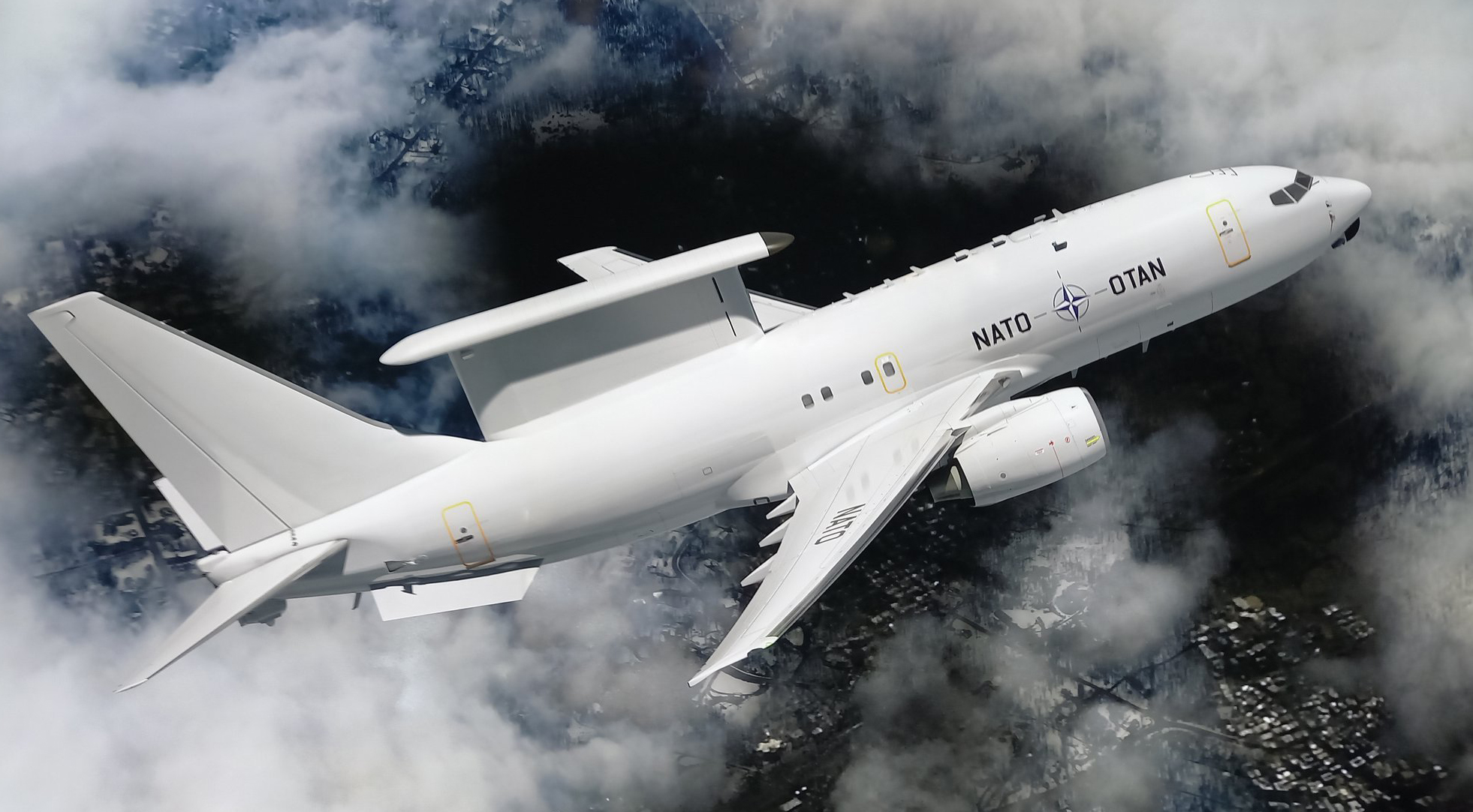NATO’s next airborne early warning and control (AEW&C) platform will be the Boeing E-7A Wedgetail, the alliance has announced. The aircraft will kickstart a much-needed overhaul of the aging NATO AEW&C fleet, made up of the E-3 Sentry Airborne Warning and Control System (AWACS). The U.S. Air Force is also procuring the E-7 to replace its E-3 fleet at least partially, with the United Kingdom doing the same, while Turkey already operates the type, so commonality with the NATO force will continue.
The NATO Support and Procurement Agency (NSPA) — responsible for multinational acquisition, support, and sustainment for the alliance — today announced its plan to “take steps toward acquiring” six E-7A aircraft. This is the initial part of an effort known as Initial Alliance Future Surveillance and Control (iAFSC). NATO plans to buy the Wedgetails via U.S. Foreign Military Sales (FMS) channels.
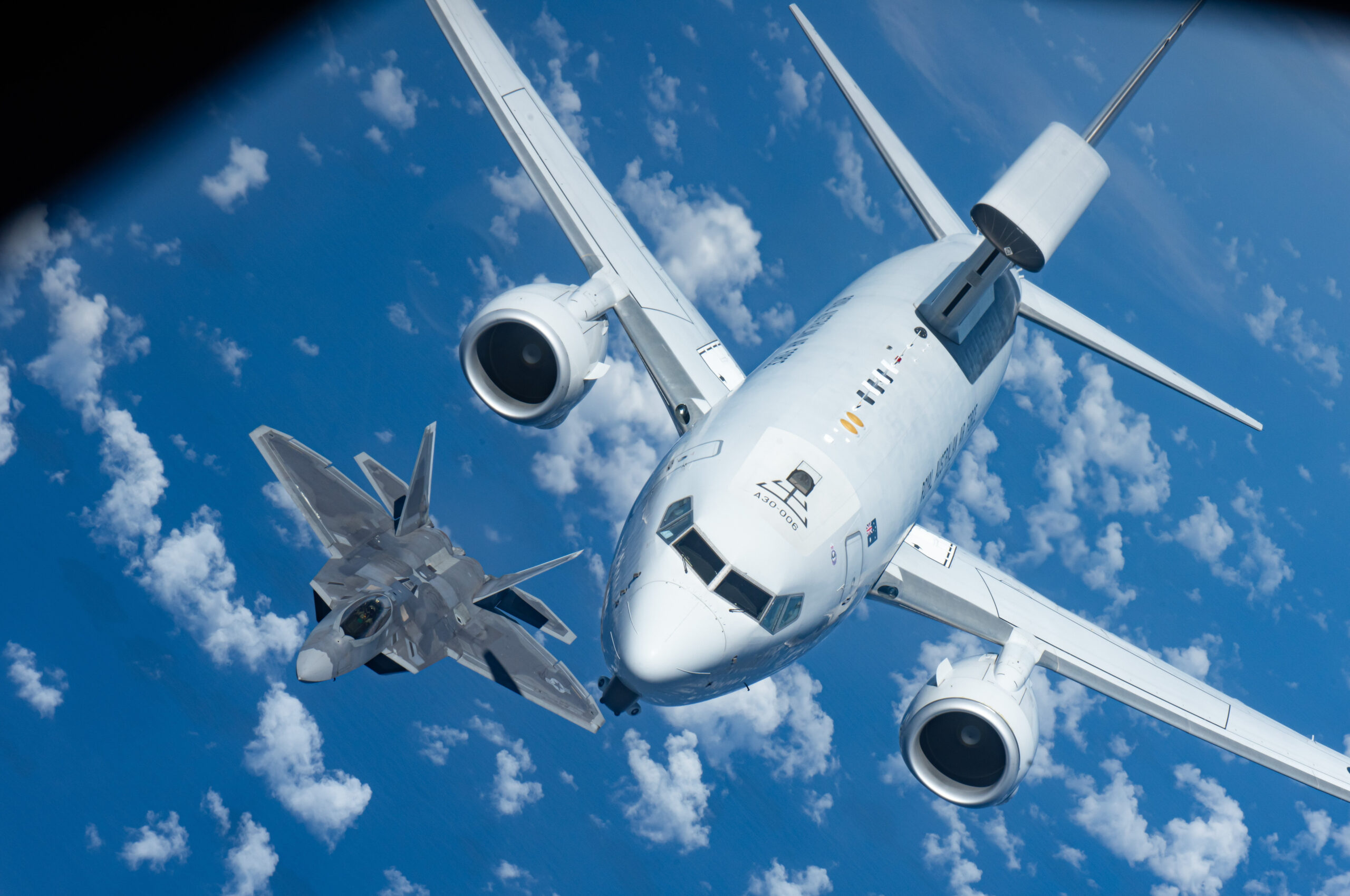
Based on an adapted Boeing 737 airframe, the E-7’s main mission sensor is a Northrop Grumman Multi-role Electronically Scanned Array (MESA) radar carried in a large fairing on top of the fuselage. The radar has air and sea-search modes, while the aircraft is fitted with extensive communications and data-sharing capabilities, allowing it to share relevant information with other friendly assets in the air, as well as at sea and on the ground. You can read much more about the Wedgetail and its capabilities in our previous deep-dive on the topic.

More generally, an AEW&C platform like the E-7 is a vital supporting asset for modern air combat operations. Aircraft like these can detect and track multiple threats and can also monitor specific areas of an aerial battlespace. They can also help track targets at sea. Furthermore, they serve as critical command and control and battle management platforms, ensuring that data flows to other assets in the air and down below.
The decision to acquire the E-7A was made by the NSPA together with the alliance’s Support Partnership Nations: Belgium, Germany, Luxembourg, the Netherlands, Norway, Romania, and the United States. As part of the “rigorous assessment process,” requests for information (RFI) and price and availability (P&A) were assessed and studies were also made of previous E-7 acquisition programs, namely in Australia, South Korea, Turkey, the United Kingdom, and the United States.
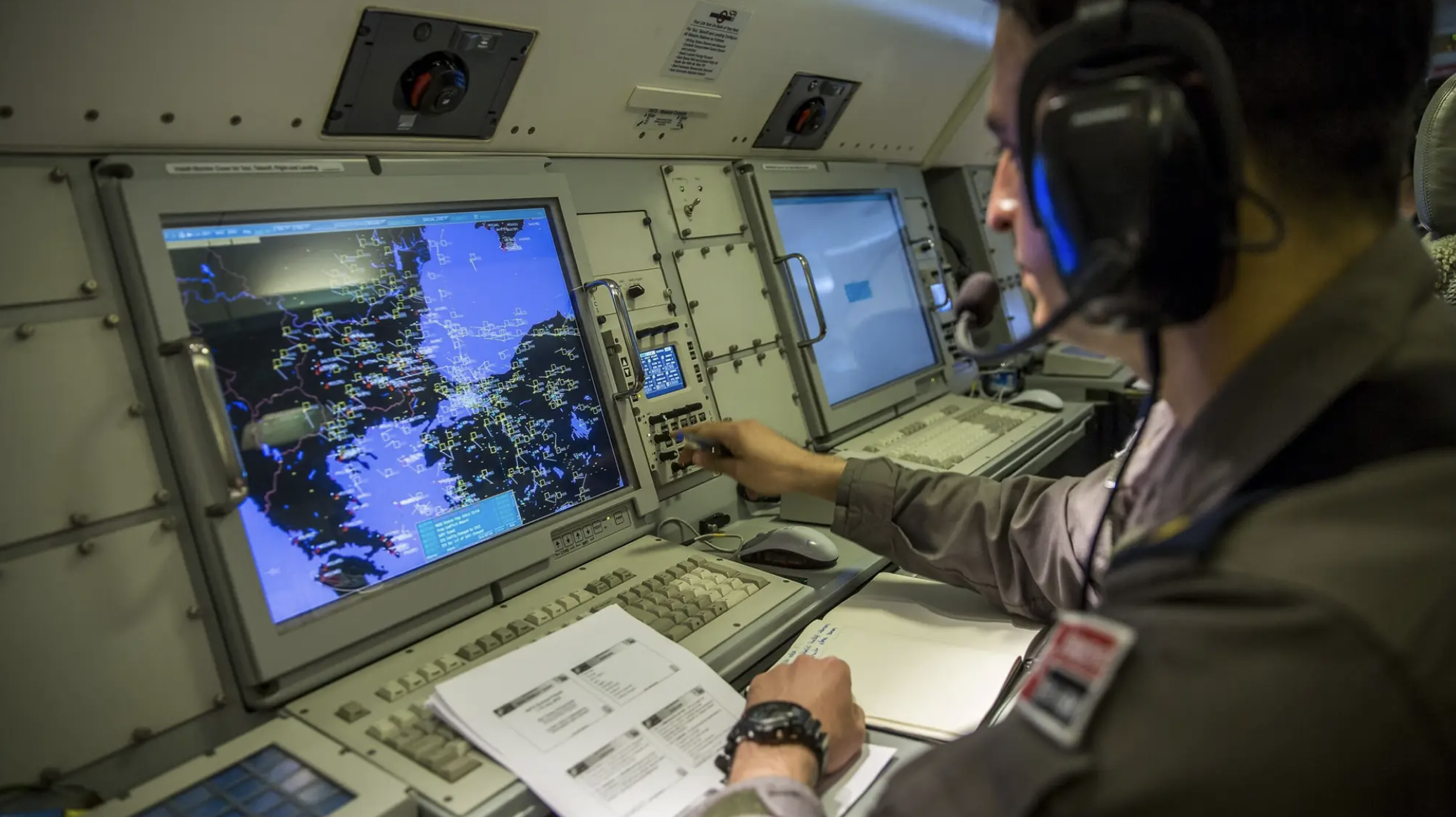
The E-7 is already in operational service with Australia, South Korea, and Turkey. It has been ordered by both the United Kingdom and the United States, although the British procurement program has been dogged by delays and cost overruns.
Between them, the NSPA and Support Partnership Nations concluded that the E-7A “is the only known system currently capable of fulfilling the strategic commands’ essential operational requirements and key performance parameters and available for delivery within the timeframe required.”
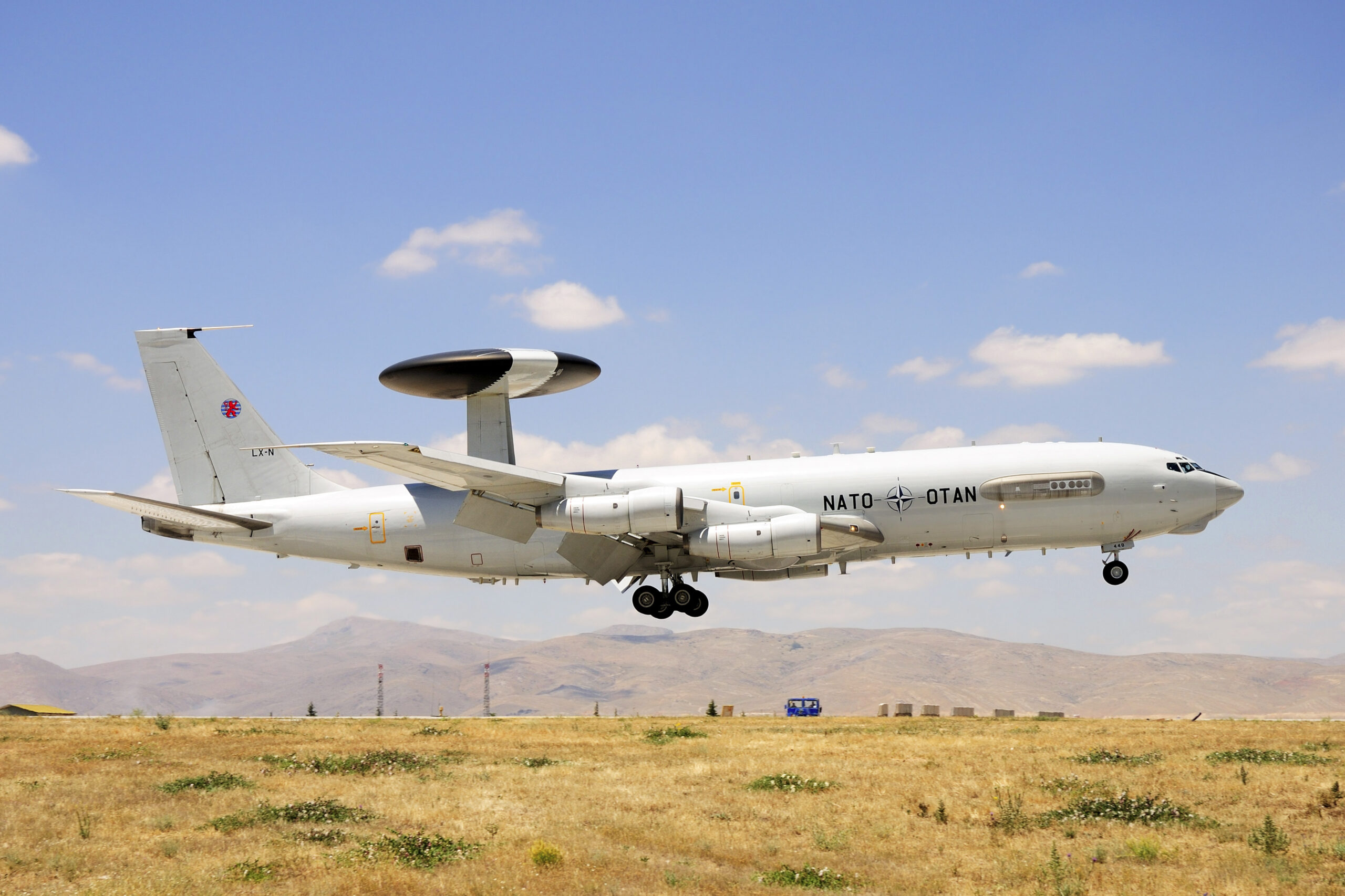
That delivery timeframe is based on the planned retirement of NATO’s current E-3 fleet in around 2035 and the aspiration for the E-7A to achieve initial operational capability (IOC) in 2031.
According to the NSPA, among the reasons that the Wedgetail was judged the best candidate were “benefits of economies of scale, commonality, and interoperability deriving from [the] multinational acquisition of military off-the-shelf platforms.” This degree of commonality and prospects for interoperability with other E-7 fleets clearly gave the Boeing product an edge over the only other realistic candidate, Saab’s GlobalEye, which is based on a Bombardier Global 6000/6500 long-range bizjet airframe.
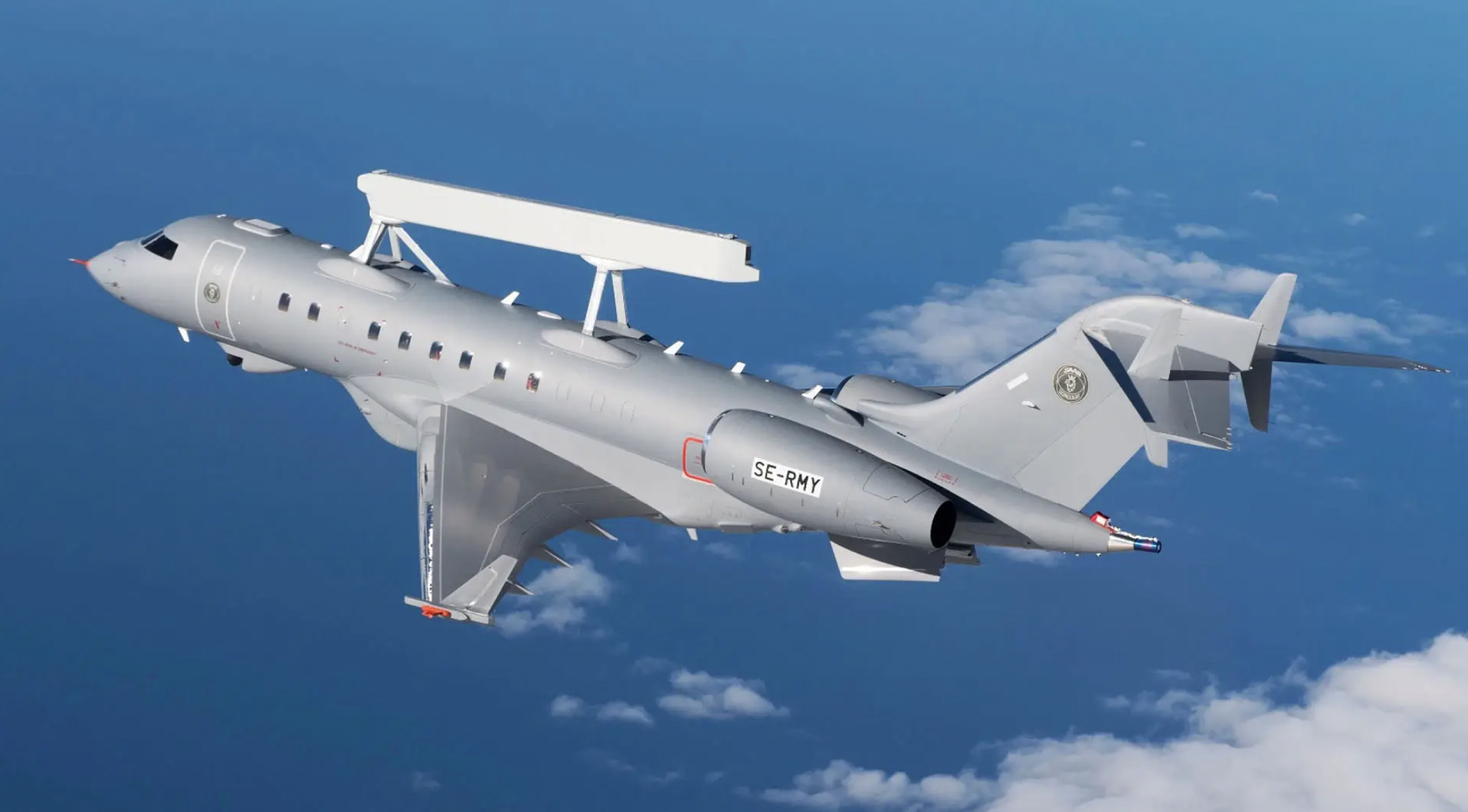
So far, the rival GlobalEye has been acquired by the United Arab Emirates and by Sweden, with the Nordic country still to formally join the alliance.
Intriguingly, the iAFSC effort is described as providing “an initial element to mitigate the risk of airborne surveillance and control capability gap,” but the Wedgetail will be just “one contributing element […] to the overall Alliance Future Surveillance and Control (AFSC) system of systems capability.
Regarding the choice of the E-7A for the alliance, Stacy Cummings, NSPA General Manager commented: “This announcement marks a significant milestone in NATO’s ongoing efforts to enhance its readiness and capabilities in the years to come. NSPA’s acquisition strategy of a sole source, FMS, multinational solution is set to deliver a range of benefits that will bolster the alliance’s ability to respond to evolving security challenges.”
Jens Stoltenberg, NATO Secretary General, added: “Surveillance and reconnaissance aircraft are crucial for NATO’s collective defense, and I welcome allies’ commitment to investing in high-end capabilities. By pooling resources, allies can buy and operate major assets collectively that would be too expensive for individual countries to purchase. This investment in state-of-the-art technology shows the strength of transatlantic defense cooperation as we continue to adapt to a more unstable world.”
With NATO set to order just six E-7A aircraft under the iAFSC effort, it would seem that there is a good likelihood of further orders for the Wedgetail being placed, as part of the broader AFSC initiative. After all, the NATO Airborne Early Warning & Control Force (NAEW&CF), home-stationed at Geilenkirchen Air Base in Germany, currently operates 16 E-3A aircraft.
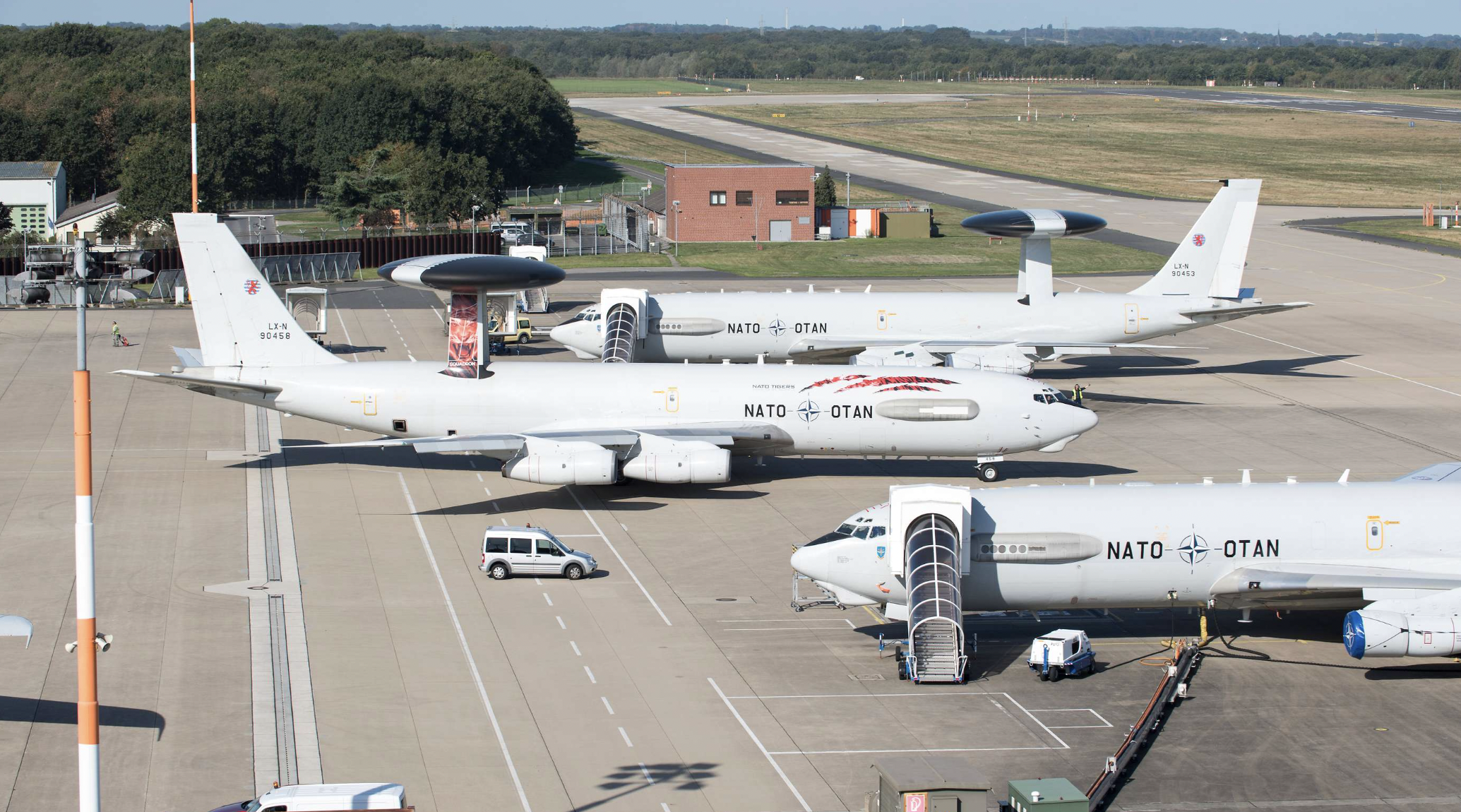
On the other hand, the description of AFSC as a “system of systems” capability points to the ambition to have the E-7A fleet, whatever its eventual size, operating as part of an integrated network of sensors, which will also include drones, other aircraft types that can operate in a surveillance-gathering capacity, and also space-based systems.
In a graphic that NATO provided alongside the announcement today, the iAFSC (or E-7A) is illustrated as one part of a multifaceted AFSC enterprise that will also include uncrewed airborne surveillance (illustrated with a NATO RQ-4D Phoenix high-altitude long-endurance drone), space-based ISR (intelligence, surveillance, and reconnaissance), maritime-based ISR, land-based radar, and MILSATCOM. Also featured are the digital backbone, and combat cloud, while a final segment is left empty, suggesting the potential for other platforms or capabilities to be added at a later date.
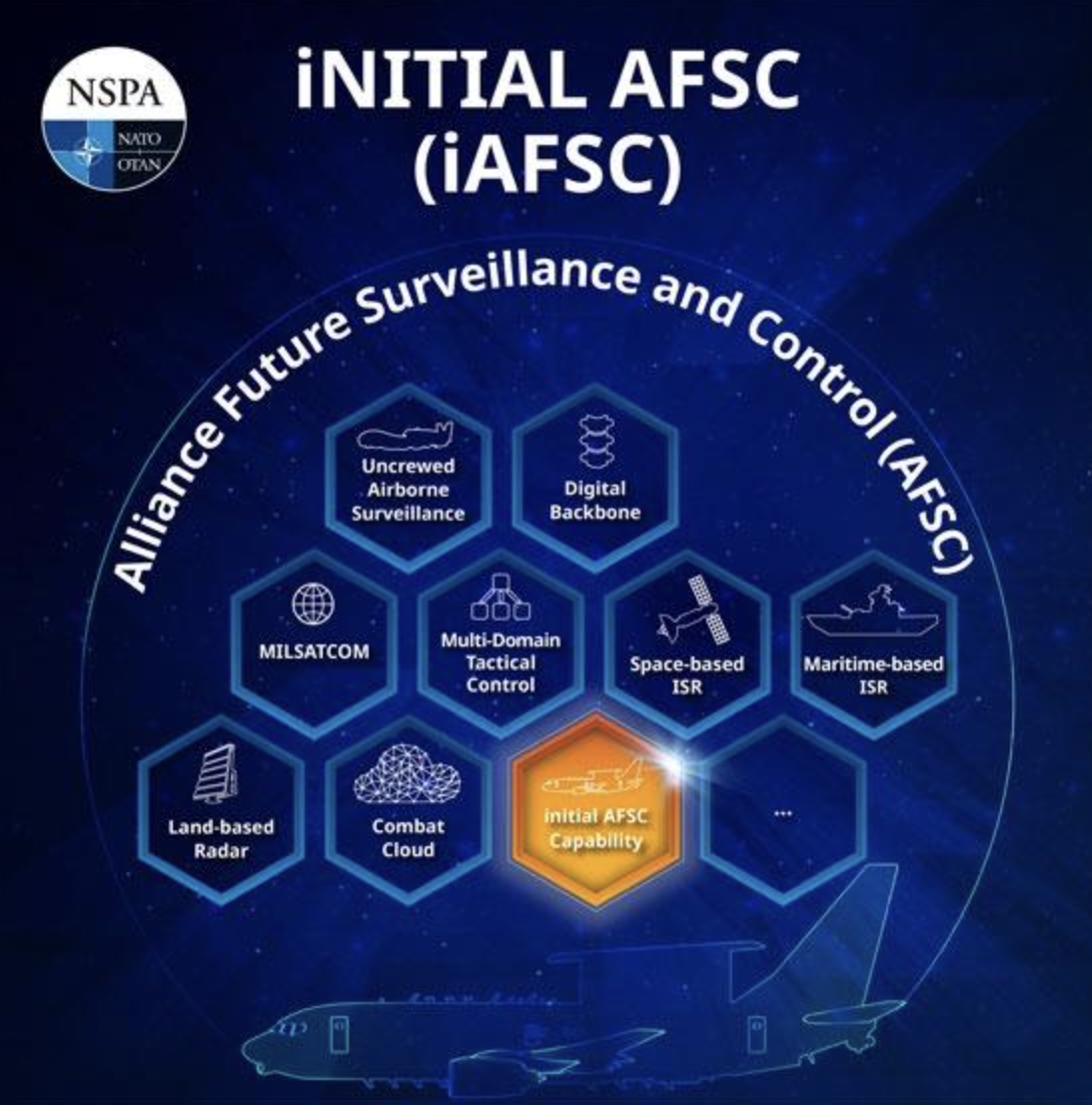
This future AEW&C vision has some similarities with what the U.S. Air Force is also looking at.
In the past, we have looked at how the U.S. Air Force has viewed the E-7 as a solution to bridge the gap between the retirement of the E-3 and a future space-based radar capability and other classified systems.
Speaking back in 2021, Air Force Chief of Staff Gen. Charles Q. Brown said that an E-7 purchase “gives us a path” to a new space-based radar capability, which he said could be less vulnerable than a system based on a commercial airliner.
“When you look to the future, ideally you’d like to be able to look at capability that can be defensible,” he explained.
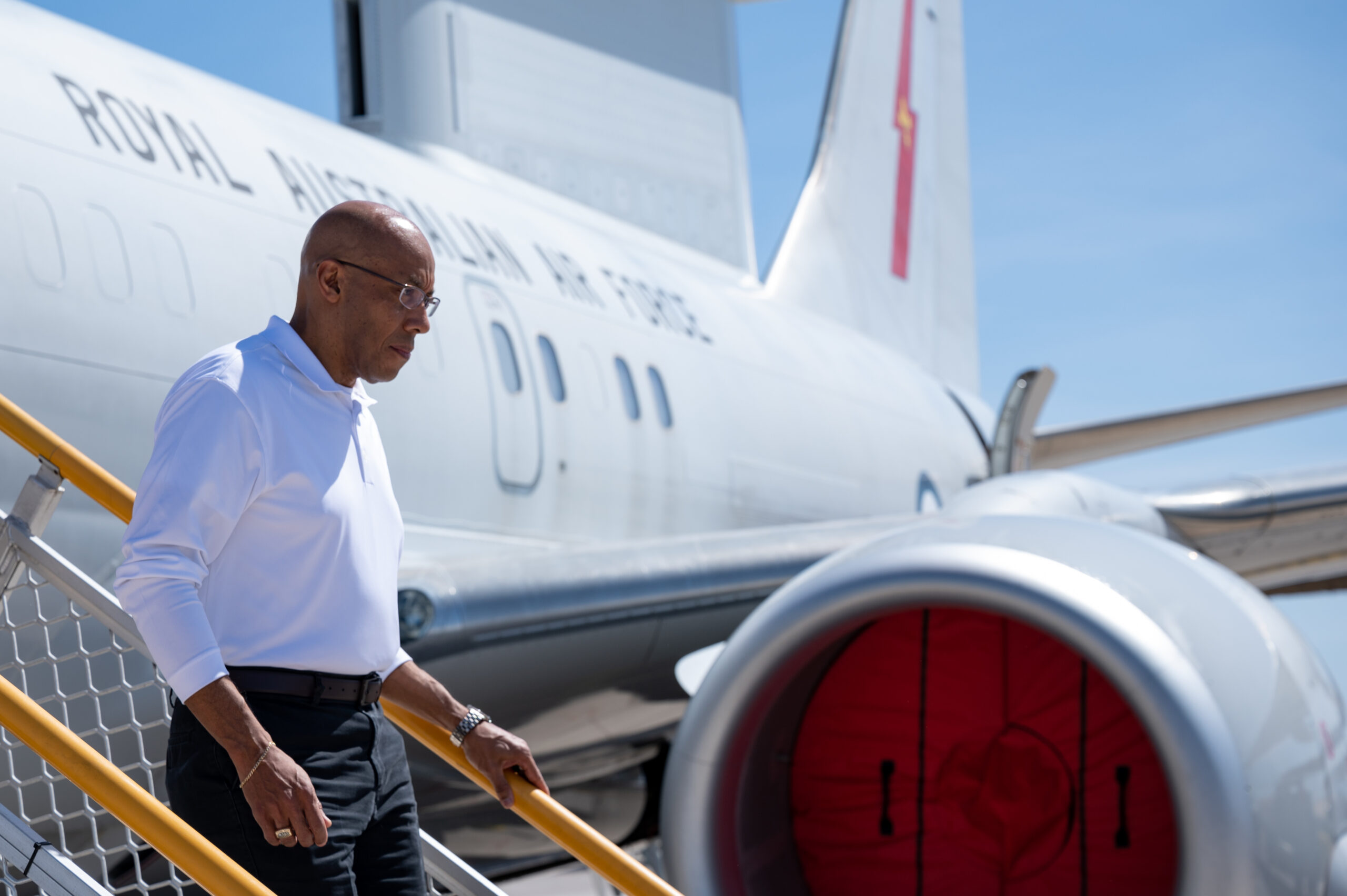
While even space-based assets are far from invulnerable, it’s important to note that the U.S. military has increasingly been looking at possibilities for future distributed space-based networks that are more resilient and less vulnerable, as well as ways to rapidly replace any satellites that are destroyed or otherwise rendered inoperable.
Like the U.S. Air Force, it’s unclear how far along NATO might be in the development of radar-equipped satellites that could provide capabilities similar to E-3 and E-7-type aircraft. But outside of classified programs, it remains the case that there are already multiple countries, as well as private companies, that publicly operate various space-based radars, albeit primarily for imaging purposes.
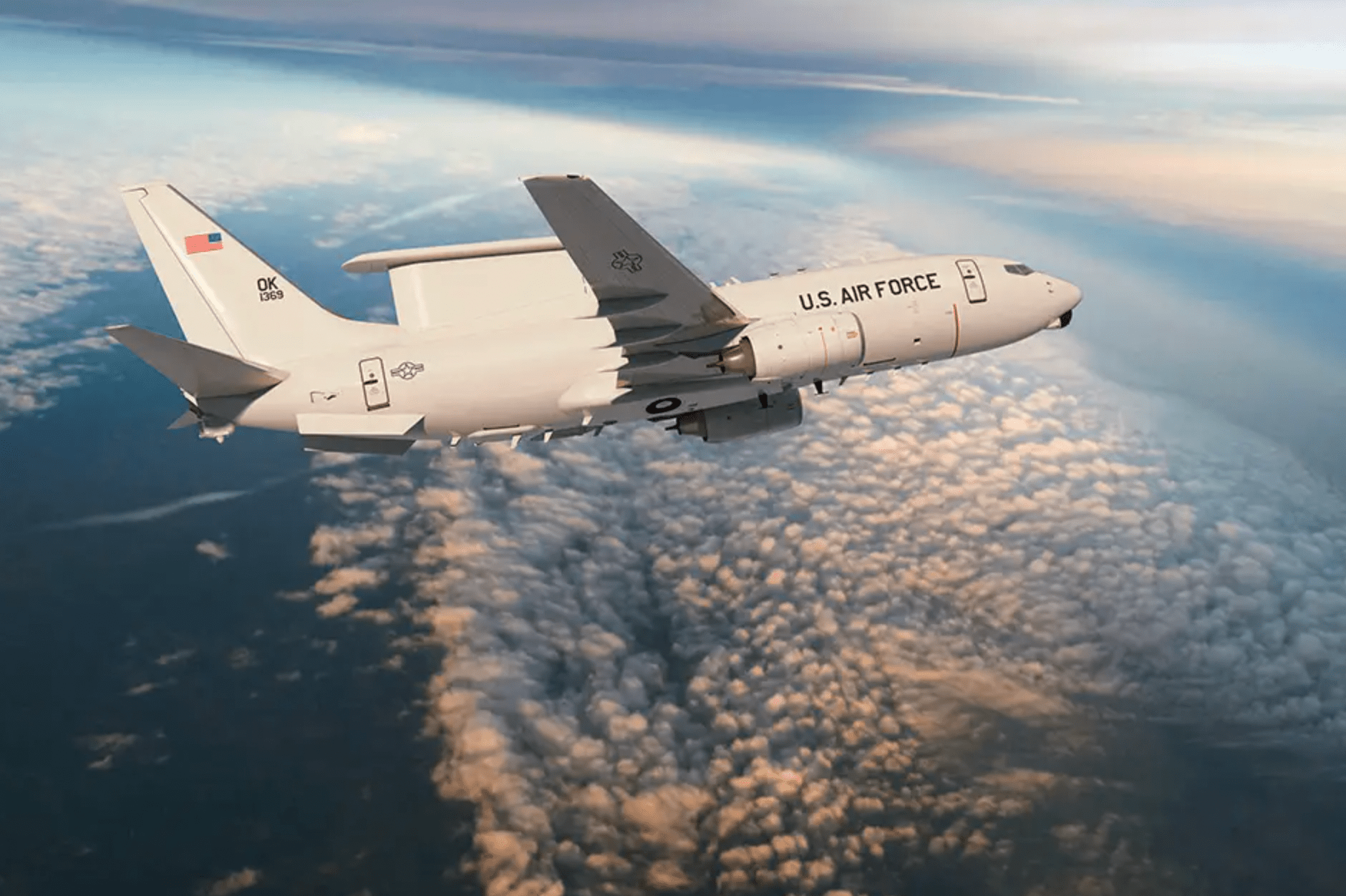
Interestingly, while NATO hasn’t so far said anything about buying more than the first six E-7As, let alone adding a different aircraft type, there may still be hope for Saab in the European AEW&C context.
At the Dubai Airshow, taking place this week, it was revealed that Denmark, Finland, and Sweden are in talks with Saab with a view to potentially jointly operating the GlobalEye. To start with, such an initiative would likely involve the two GlobalEyes that Sweden has ordered, with deliveries due in 2027. Sweden has an option for another two such aircraft.

“We are having discussions with the neighboring countries in Scandinavia — Finland and Denmark — to see whether scaling up from two or more aircraft in the region could be part of the equation in the region,” Tomas Lundin, head of marketing and sales of AEW&C business at Saab, told Shephard Media.
There is a precedent for such cooperation, including the launch of a Nordic Warfighting Concept for Joint Air Operations, earlier this year. This aims to bring together “integrated command and control, operational planning, and execution; flexible and resilient deployment of our air forces; joint airspace surveillance; and joint education, training, and exercises.” You can read more about it here, suffice to say, a joint AEW&C endeavor would be an obvious addition.
Aside from GlobalEye, Saab already has an AEW&C footprint with NATO operators in Europe. Greece operates the earlier Erieye system, mounted in EMB-145H regional jets, while Poland recently received the first of its Erieye-equipped Saab 340 twin-turboprop aircraft. Sweden, currently awaiting NATO membership, also operates Saab 340s with Erieye, under the local designation S 100B Argus.
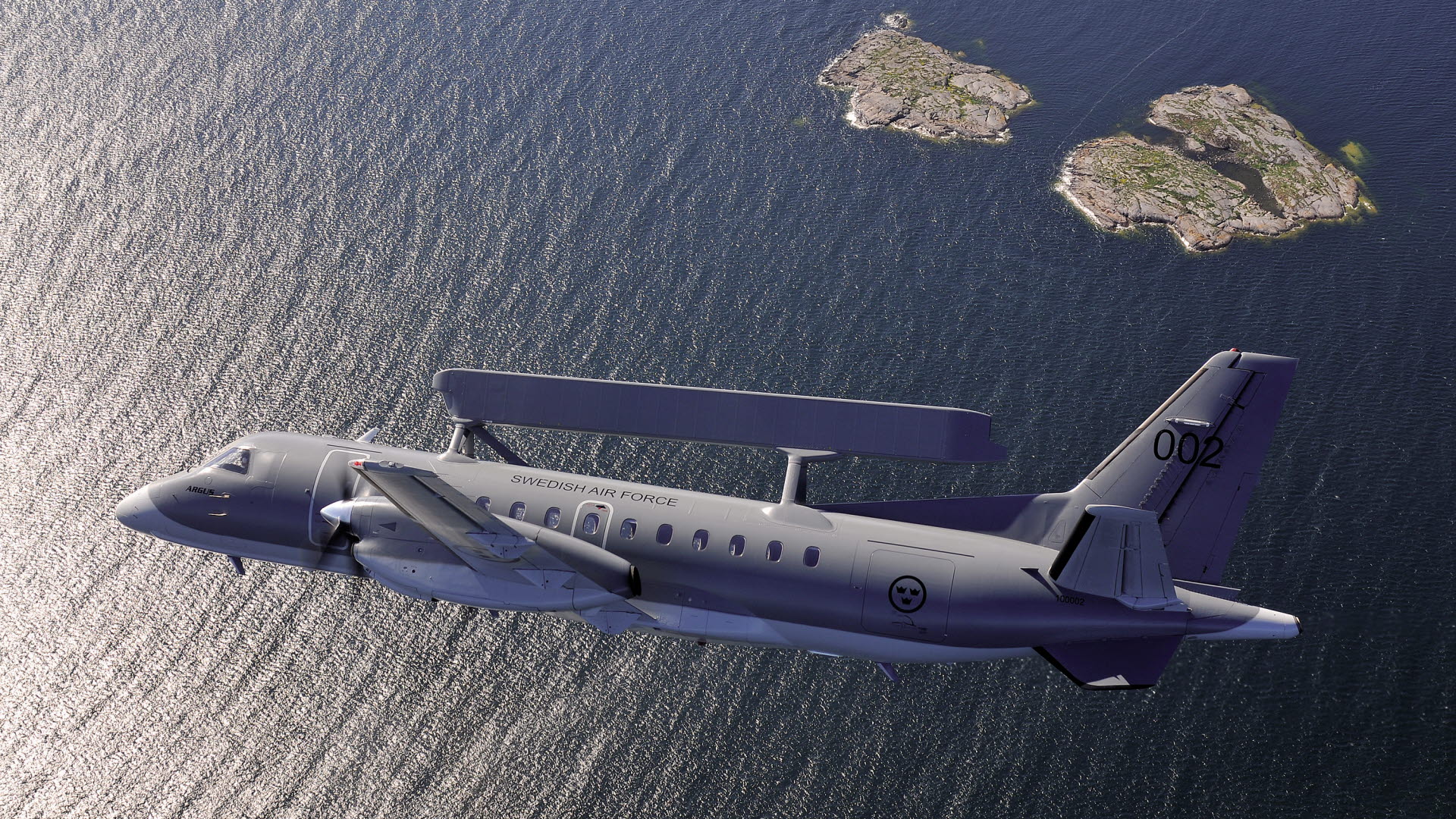
Within Europe, interest in AEW&C is being spurred by the re-emergence of the threat from Russia, as well as other operational contingencies requiring broad-area surveillance and airspace control. Already, the E-7 is playing an important part in these missions, not only with Turkey, but also in the example of the aircraft that Australia has deployed to Europe. The Royal Australian Air Force (RAAF) has used its Wedgetail to help keep watch over military and humanitarian supplies entering Ukraine and the performance of the aircraft in this theater may well also have helped inform NATO’s decision to procure the E-7A.
Overall, the specific demands of the European area of operations make an AEW&C asset like the Wedgetail especially valuable, bearing in mind NATO’s close proximity to Russia and the requirement to keep an eye on Russian military aircraft movements as well as Russian drones and missiles. While this has become more of an issue in recent years, the daily airspace surveillance needs in Europe are something that has existed since the Cold War.
With Saab hopeful that GlobalEye could still find new customers in Europe and with NATO having joined the U.S. Air Force in announcing plans to acquire the E-7A, it’s fair to say that AEW&C is seeing something of a renaissance within NATO, more generally.
Contact the author: thomas@thedrive.com
